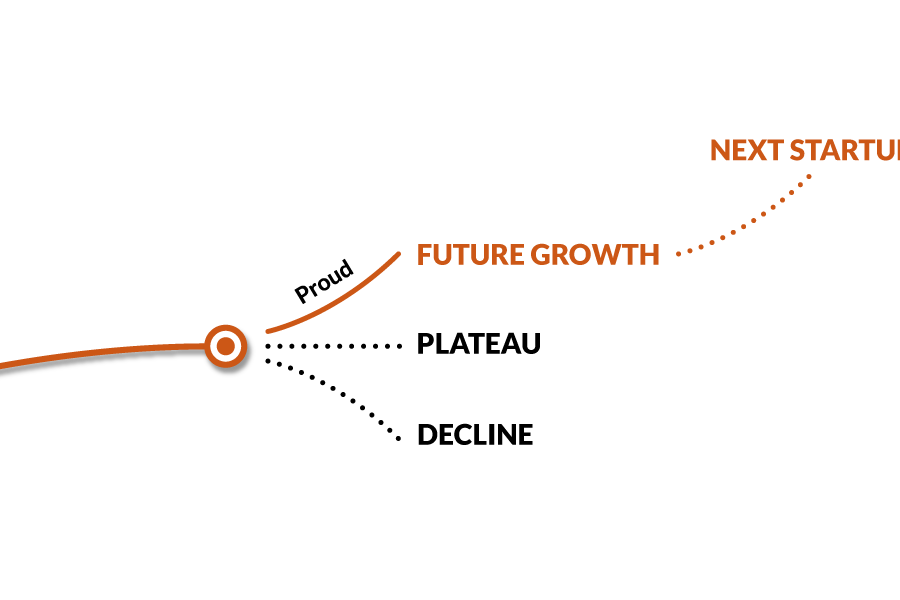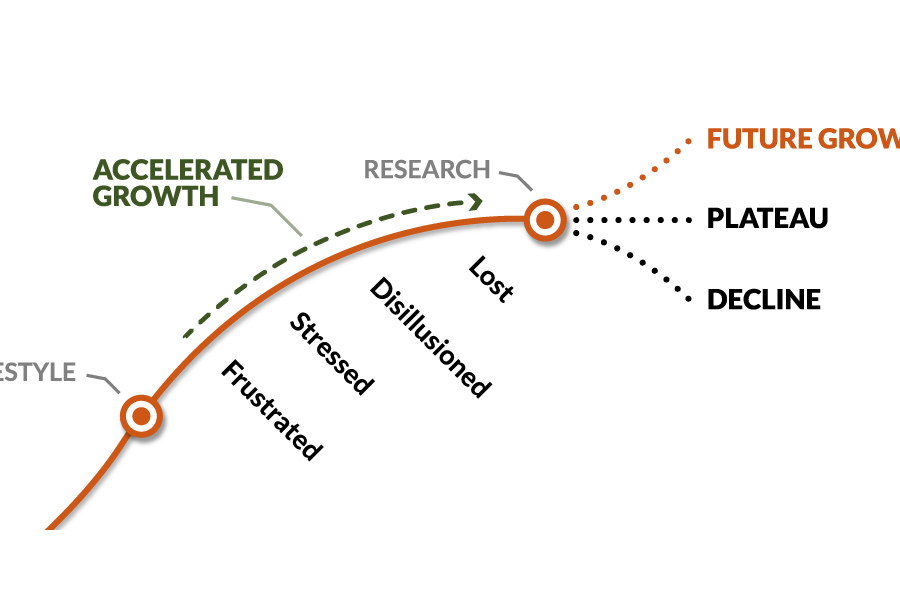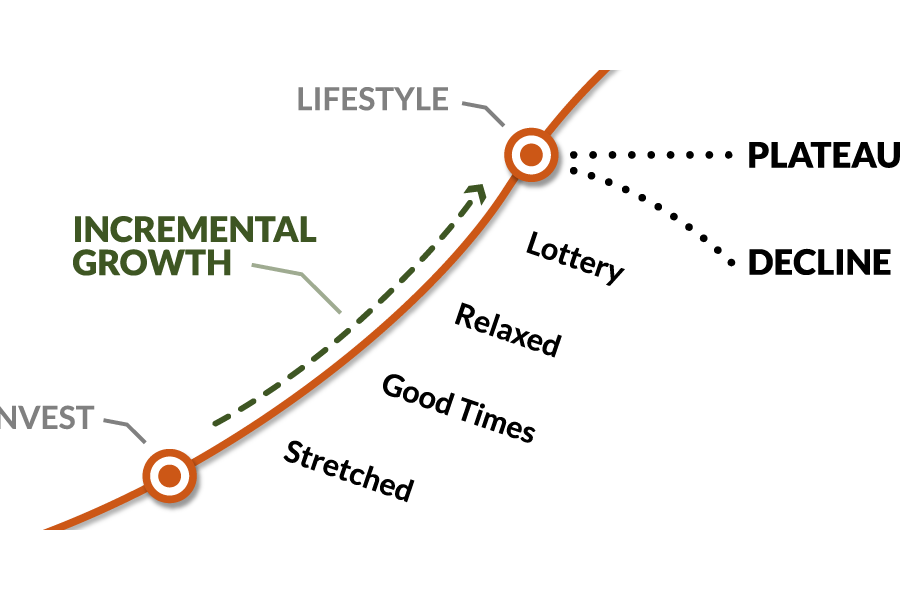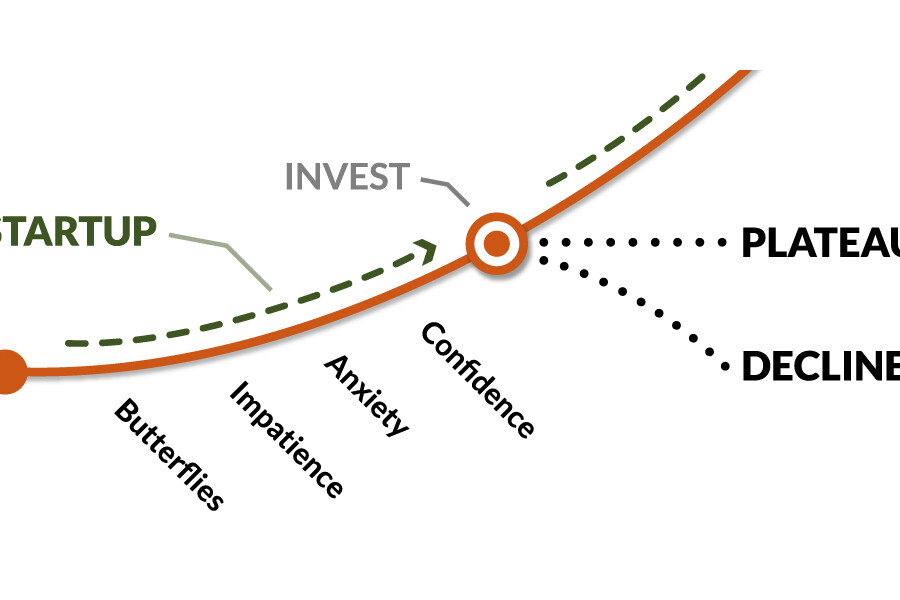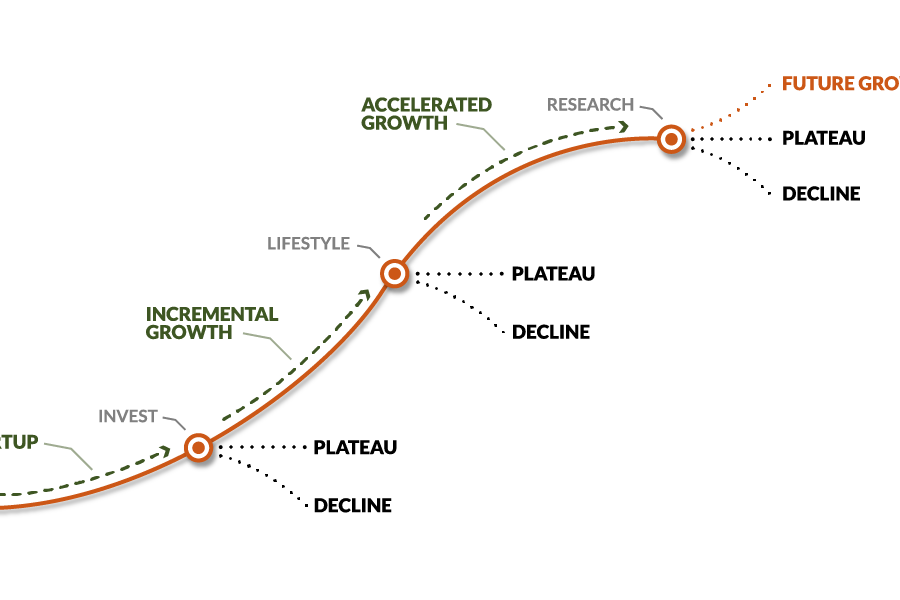What You Need To Know About Mature Companies Suddenly Revisiting Startup
Throughout their history, organizations progress through various phases and stages of the business cycle. What needs to be more widely understood is that they repeat just like the Economic Cycle. The founders or their successors find themselves experiencing emotions or behaviors that they do not expect to see. This article addresses the experience of an organization either completely going through or having important operations and investments going through the Next Era Startup phase.
The feeling stages within the return to the Next Era Startup phase are the same. They will go through feelings of butterflies, impatience, anxiety, and confidence and transition to a new business and leadership capabilities phase. We delve into the distinct behaviors exhibited and the actionable strategies required to progress seamlessly.
Organizations often transition into Middle Market businesses through other tipping points from Lower, Middle, and Upper Middle Markets. The National Center for The Middle Market defines the middle market as $10 million to $1 billion, with a Lower $10 million to $50 million, Middle $50 million to $150 million, and Upper as $150 million – $1 billion. Most of the nearly 200,000 Middle Market businesses fall in the Lower Middle Market classification.
The ‘Butterflies’ Phase (Take Two): Trepidation Mixed with Eagerness for Expansion
Signature Behaviors
A further iteration of the butterflies phase often occurs as a small business has survived the often-brutal transition into a middle market business. Its success drives the desire for new growth opportunities to support its established business and markets. Here, the management focuses on the bigger picture, contemplates strategic partnerships, and pursues expansion opportunities. As they enter this stage, the new opportunities create excitement and ‘butterflies’ and how they could achieve their now often bigger vision. A renewed focus returns and eagerness to grow, remembering the stall experienced during the last transition.
Decision Making
There is a bias toward maintaining momentum, quickly acting, and rushing to implement the next growth phase. While a business should be proud of achievements made, leadership is often hungry for further growth. This time around, there is initially a feeling of invulnerability; after all, entering the middle market is a significant feat.
Actionable Steps for Progress
Overcoming the butterflies in this stage requires:
- Set realistic expectations, as this phase’s skill and capability levels differ greatly from the previous.
- The sales approach must often evolve as the clients are larger and more sophisticated.
- Evaluate potential partnerships and collaborations in the context of mutual benefit and industry relevance.
- Strengthen communication channels with existing customers, foster loyalty, and explore opportunities to upsell.
Example: Business Consulting Company
Business Consulting, a high-performing consulting firm, had grown significantly, and now larger clients were coming to them. The firm was confident and exploring what was next, excitedly opening offices in new cities. Its prior approaches to selling and leveraging local reputation were not having the same impact in these new markets.
The ‘Impatience’ Phase (Take Two): The Drive for Scaling Up
Signature Behaviors
The second iteration of the impatience phase sees seasoned enterprises pressing for success with their growth investments. Pressure continues those leading the expansion activities; some are recent hires in new locations and have underestimated the time and resources it will take or the introduction of a new product not garnering the speed of adoption by the current customers. As the business attempts various activities to gain the desired momentum, increasing risks get taken to get things on track to the planned timeline.
Decision Making
The tension builds between holding fast and quickly trying things to have traction. Attention becomes dispersed and scattered. Franticness develops, and the ball often gets dropped because the infrastructure to support the business is still lagging. Decisions start to slow as frustration with the lack of momentum compared to their expectations.
Actionable Steps for Progress
To effectively make progress at this phase, businesses should:
- Develop a comprehensive growth blueprint that factors different adoption cycles.
- Keep focused on the source activities to generate revenue.
- Devote resources to optimizing sales processes and sales team capabilities and tools.
Example: Tech Solutions Company
Tech Solutions, a leading local IT service provider, realized that to significantly expand its market it would need to support additional cloud platforms. The expectation of doubling its revenue and having similar revenue per deal / customer as the traditional business. Frustration developed between the delivery and sales team about how long it was taking to get clients of similar size for this new service line without realizing that the service line was, in fact, a new business within the existing business.
The ‘Anxiety’ Phase (Take Two): Managing Risks and Doubts
Signature Behaviors
As with the first time around, the impatience phase develops into anxiousness for success. Fear that the growth venture might fail and concern such as whether the people driving it have the right capabilities develops.
Questioning whether it was the right city, product, or market occurs and why it has yet to succeed. Doubt increases about whether to send additional resources and whether they will send good after bad. Fears about damaging the company’s reputation and its success story build and concern about how competition will capitalize on the perceived failure.
Requests for discounts come from the sales team desperate to get some form of increase. Often the executives, the sales, and the marketing team widen their net into other markets; blame starts focusing on the product, marketing, or strategy as the cause of failure.
Approved budgeted spending often comes to its limits and requests further approval because prior spending is a sunk cost.
Decision Making
Decisions start to stall, pivots, reducing related expenses, and commitments are all considered, especially if the leadership needs to gain the experience or capability for launching the specific expansion investments in the recent past.
Decisions made at this time determine which path the growth investment takes. If the developing asset is good but resource-starved, it will stall and ultimately decline. If the investment was bad, it should be quickly closed to commence the next one. As the management team gains confidence, it will move to the next stage.
Actionable Steps for Progress
To navigate this anxiety, management should:
- Review the business case for the expansion. Is the issue the strategy, the timing, and time expectations, or is it the team? Were the assumptions right and the expectations realistic?
- Is the expansion a stretch? Jumping from a single office or location serving a state to opening up in a different country 5,000 miles away is, for many, high-risk.
- Make sure that the business infrastructure can support the expansion.
- Ensure the sales tools, process, and positioning are aligned for easy growth.
- ‘Act as if,’ persevere, and keep focused. Set a deadline for the expansion to start gathering traction.
- Manage the team’s stress levels and how they present themselves in front of the prospects. Ensure that they have support.
- Embrace iterative learning and experimentation for self-assessment and risk mitigation.
- Encourage cross-functional or cross-divisional collaboration and what concerns prevent them from succeeding.
Example: Specialized Manufacturing Company
The specialized engineering components manufacturer cautiously expanded into related industries through collaborations and joint ventures. This approach allowed them to harness their expertise for new markets without jeopardizing their core business. Even with this approach, they entered the ‘Anxious’ stage with each of these collaborations and joint ventures. Through their experience, they built a playbook to help future leaders and team members to educate and understand the critical reviews, assessments, and journey these will go on as they develop before they truly establish themselves, including when to withdraw from the initiative and how to do it without damaging the partner relationship.
The ‘Confidence’ Phase (Take Two): Sustaining Momentum Through Informed Decision-Making
Signature Behaviors
As the anxiousness of the prior stage wanes and confidence that the investments will work builds, the management team now considers how to develop and scale the growth expansion.
There can be some pressure from either the team or the management to recapture the growth perceived to have been missed as the growth investments took their time to mature. There is often a danger of short-termism.
Decision Making
What investments will create the desired growth can be sustained become the key decision discussions. Pressure by the team going through this phase for the first time often drives pressure to increase to gain significant profit, rewards, and bonuses.
Understanding what investments are required to support growth, revenue, and customer service is key.
These investments’ initial success can also strain the organization. Experienced operators understand that they need to review the organization for a while and understand what further investments are now made across the entire organization to sustain the now bigger business, its customers, staff, and facilities.
Actionable Steps for Progress
During this phase, businesses need to:
- Plan ahead of the growth and work with other departments to understand the impact on their functions as the development gains momentum.
- Grow or develop the organization to handle customer service as the next growth phase will cause some breakdowns.
- Recognize and celebrate accomplishments, fuel motivation, and protect the culture.
Example: Logistics Company
As it expanded its locations and services within its network and became confident about its success in these investments, an international logistics and supply chain provider understood that it would need to create a significant investment in its core capacity and infrastructure. Further increases in delivery capacity would be able to use this core for a decade.
Conclusion
The business is now well established, and the founders are proud of the company it has become. They can revisit and be surprised by going through the experiences and feelings they associated with when they started the business or observing them in their team.
By getting ahead of the business cycle, experienced operators can put plans, measures, and support in place to manage the feelings of butterflies, impatience, anxiety, and confidence that they or their team will experience and their potential to send them off track by the surprise of feeling that way.










